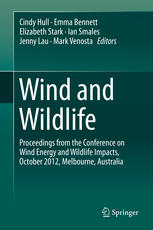

Most ebook files are in PDF format, so you can easily read them using various software such as Foxit Reader or directly on the Google Chrome browser.
Some ebook files are released by publishers in other formats such as .awz, .mobi, .epub, .fb2, etc. You may need to install specific software to read these formats on mobile/PC, such as Calibre.
Please read the tutorial at this link: https://ebookbell.com/faq
We offer FREE conversion to the popular formats you request; however, this may take some time. Therefore, right after payment, please email us, and we will try to provide the service as quickly as possible.
For some exceptional file formats or broken links (if any), please refrain from opening any disputes. Instead, email us first, and we will try to assist within a maximum of 6 hours.
EbookBell Team

4.8
24 reviewsThis book gathers papers presented and discussions held at the Conference on Wind Energy and Wildlife Impacts in Melbourne, Australia on 9th October 2012. The purpose of the conference was to bring together researchers, industry, consultants, regulators and Non-Government Organizations to share the results of studies into wind farm and wildlife investigations in Australia and New Zealand. The aim was to further networking and communication between these groups. The conference discussed key issues and areas for future investigation, with the intention of developing consistencies in research and management. Like the Conference, the book showcases current research and management in the field of wind farms and wildlife in Australia and New Zealand; establishes consistencies in research and management; and highlights areas in need of further examination. The papers in these Proceedings are presented in two session topics. The first covers “Investigations and assessment of new wind farms” and the second, “Monitoring, mitigation and offsets.”
The Proceedings then summarize the panel discussions held at the end of the conference. The themes include improving pre- and post-construction survey design; identifying key knowledge gaps and research priorities; uncertainties and errors in data sets and analysis; creating opportunities to share knowledge; and assessing cumulative impacts across multiple sites.